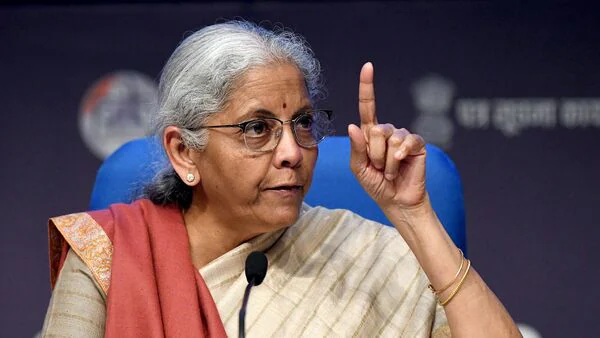On February 1, Union Finance Minister Nirmala Sitharaman delivered a pivotal budget speech, lasting just 74 minutes—the second shortest in her tenure. This budget stands out as one of the most consequential in years, introducing a sweeping tax rebate designed to stimulate consumer demand and address the current cyclical economic slowdown.

With high expectations for tax relief leading up to the budget, Sitharaman opened by affirming the government’s commitment to “accelerate growth, secure inclusive development, invigorate private sector investments, uplift household sentiments, and enhance the spending power of India’s rising middle class.” The Union Budget for 2025-26 unveiled a significant tax rebate, exempting individuals earning up to ₹12 lakh from income tax. It also announced the anticipated new income tax bill and continued emphasis on productive capital expenditure.
The budget reflected improved fiscal deficit numbers, projecting a deficit of 4.4% of GDP for 2025-26, slightly below the anticipated 4.5%. Additionally, changes in customs duties were introduced to enhance the competitiveness of Indian manufacturing and reduce regulatory hurdles for businesses.
Prime Minister Narendra Modi described the budget as a “force multiplier,” emphasizing its role in fulfilling citizens’ aspirations. He proclaimed that common people will drive the mission of Viksit Bharat (developed India), predicting increases in savings, investment, consumption, and overall growth. Recently, Modi hinted at tax reforms, expressing hope that prosperity would bless the middle class.
Targeting key support groups like the poor, youth, farmers, and women, this budget especially reached out to the middle class—a demographic that has traditionally backed the Bharatiya Janata Party (BJP) but felt overlooked in recent years amidst various social welfare initiatives. “The middle class provides strength for India’s growth,” Sitharaman reiterated, noting periodic tax relief as recognition of their contributions.
Importantly, the tax rebate extended to those earning up to ₹12.75 lakh, while the new tax regime raised the threshold for the highest 30% rate to ₹24 lakh annually (up from ₹15 lakh), yielding potential savings of ₹1.1 lakh for those at this income level.
The budget’s implications stretch beyond mere tax relief, also serving to boost the BJP’s political prospects, particularly with impending elections in Delhi. Specific initiatives were tailored for Bihar, including enhancing airport infrastructure and funding for a fox nuts (Makhana) board, as the state approaches elections later in the year.
Beyond tax measures, Sitharaman outlined “four engines of development”—agriculture, Micro, Small, and Medium Enterprises (MSMEs), investment, and exports—along with strategies intended to position India as a developed nation by 2047.
In agriculture, initiatives will target improving productivity in 100 low-performance districts, promote crop diversification, expand lending through Kisan Credit Cards, and work towards self-reliance in pulse production. For MSMEs, a broader definition was proposed, increasing credit guarantee covers, introducing tailored credit cards for small businesses, and supporting first-time entrepreneurs.
Investment initiatives included raising the Foreign Direct Investment limit in insurance, removing regulatory bottlenecks, and establishing an investment friendliness index for states, as well as reforms in bilateral investment treaties. To bolster exports, an export promotion mission with a budget of ₹2,250 crore was announced, along with measures for easier credit access for exporters.
Despite these ambitious plans, the budget maintained fiscal prudence, with a consistent focus on capital expenditure, projected at 3.1% of GDP—similar to last year. This underscores the government’s expectation of increasing private investment. Each infrastructure ministry is tasked with formulating a three-year project plan to collaborate with private firms, suggesting a comprehensive approach to enhancing economic growth.